Happy International Women's Day! On this day, we wanted to celebrate the success of women within science, mathematics and medicine, and how they have helped shape the pharmaceutical industry in which we work. Without the hard work and success of these individuals, we may not be providing the level of healthcare currently available. Today, half of medical graduates are female, as well as doctors and top researchers, it is reported that the number of statisticians equals the number of men. Please read on to learn about some of the most influential women to celebrate international women’s day.
1. Metrodora
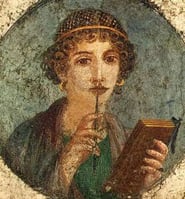 |
Metrodora Born: Sometime around 200-400 CE Famous for: First female medical writer |
| If we want to start as early as we can, then we should have to begin with Metrodora. She was a Greek physician and the author of the oldest medical book known to be written by a woman, on the disease and cures of women. During the Greek and Roman times, this book was referenced frequently by other medical writers and was used in Medieval Europe as well. Metrodora is known to be the first female medical writer and although her work was influenced by the works of Hippocrates, a major Greek physician (460-370 BC), her approach differed from many other medical writers as she referred directly to Hippocrates, instead of using the proliferation of secondary sources. |
|
2. Florence Nightingale
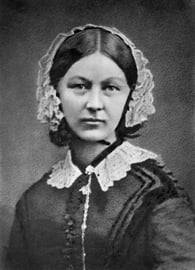 |
Florence Nightingale 1820 – 1910 Famous for: Statistics and founding modern nursing |
| Florence Nightingale, born 1820 in Florence, Tuscany was a renowned English social reformer and statistician as well as the founder of modern nursing. Florence became someone of importance when she went to the Crimean War to nurse wounded soldiers, Florence and the nurses trained by her saved the lives of many. She was responsible for professionalising nursing roles for women. In 1860, she laid the foundation of professional nursing with the establishment of her nursing school at St Thomas' Hospital in London. The ‘Nightingale Pledge’ taken by new nurses was named in her honour, and the annual International Nurses Day is celebrated around the world on her birthday. Florence also helped popularise the graphical presentation of statistical data, the achievements of statisticians past, present and future are celebrated from Florence Nightingale, who used statistics to modernise health care. She is credited with developing a form of the pie chart now known as the polar area diagram, or occasionally the Nightingale rose diagram, which she used to illustrate seasonal sources of patient mortality in the military field hospital she managed. Florence was also a prodigious writer and published work concerned with spreading medical knowledge. |
|
| “I attribute my success to this – I never gave or took any excuse.” | |
3. Ada Lovelace
 |
Ada Lovelace 1815-1852 Famous For: Mathematics and writing, chiefly known for her work on Charles Babbage's early mechanical general-purpose computer, the Analytical Engine |
|
|
Ada Lovelace (the only legitimate child of the poet Lord Byron), born Augusta Ada Kim, Countess of Lovelace, 1815, Marylebone, London, England was a mathematician and writer, primarily known for her work on Charles Babbage’s early mechanical general-purpose computer, the Analytical Engine. Between 1842 and 1843, she translated an article by Italian military engineer Luigi Menabrea on the engine, which she supplemented with an elaborate set of notes, simply called Notes. Ada is often regarded as the first computer programmer, as her notes on the engine contain what is recognised as the first algorithm intended to be carried out by a machine. |
||
| “Thus not only the mental and the material, but the theoretical and the practical in the mathematical world, are brought into more intimate and effective connection with each other.” |
||
4. Rosalind Franklin
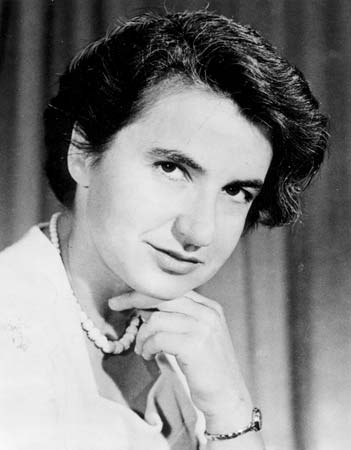 |
Rosalind Franklin 1920-1958 Famous For: Research on the fine structure of coal and graphite, the structure of DNA and the structure of viruses |
|
|
Rosalind Franklin, born 1920 in Notting Hill, London, England, was a chemist and X-ray crystallographer. Rosalind made contributions to the understanding of the molecular structures of DNA, RNA, viruses, coal, and graphite. She discovered that two forms of DNA existed; form A and form B, and that these two molecules existed in different conditions. She laid the basis for quantitative studies of diffraction patterns and demonstrated the double helix of the DNA in an X-ray experiment. She made excellent X-ray photographs that she had obtained from her systematic work and painstakingly explained their implications as well. After finishing her work on DNA, Rosalind led pioneering work on the molecular structures of viruses. Had she been alive, Rosalind would’ve likely shared the Nobel Prize in Chemistry won by her team member Aaron Klug who continued her research after her death. |
||
| “Science and everyday life cannot and should not be separated.” |
||
5. Marie Curie
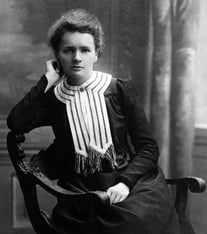 |
Marie Curie 1867 - 1934 Famous for: Work on radioactivity which helped the development of X-rays |
|
| Marie Curie was born Maria Sklodowska in 1867 in Warsaw, Poland. She was a physicist and chemist who conducted revolutionary research on radioactivity. Marie studied the radiation of all compounds containing the known radioactive elements, including uranium and thorium, which she later discovered was also radioactive. Her accomplishments include: the development of the theory of radioactivity, the discovery of two elements polonium (named after her home country of Poland) and radium, and techniques for isolating radioactive isotopes. This research was crucial in the development of x-rays in surgery. Not only was Marie the first woman to win a Nobel Prize, she was also the only woman to win twice and the only person to win twice in multiple sciences. |
||
| "Nothing in life is to be feared; it is only to be understood." |
||
6. Rebecca Lee Crumpler
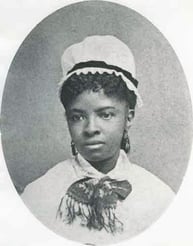 |
Rebecca Lee Crumpler
1831 – 1895 Famous for: First African American doctor |
|
Rebecca Lee Crumpler challenged the prejudice of the 19th century by becoming the first African-American doctor. She earned her medical degree at a time when African Americans were discriminated against when pursuing a career in medicine. She earned her degree from what is now known as Boston University in 1864. |
|
| "I early convinced a liking for, and sought every opportunity to relieve the suffering of others” | |
7. Gertrude Belle Elion
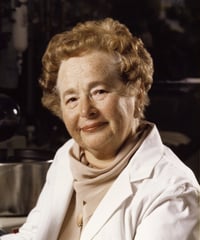 |
Gertrude Belle Elion
1918 – 1999 Famous for: New Drug Discovery |
|
Gertrude Belle Elion was famous for her contributions to the field of medicine with the development of new drugs. Notably she was recognised for her work with Purinethol, the first major drug to fight leukaemia and AZT to help combat AIDS. She was inspired to study chemistry after her grandfather died from cancer when she was just 15 years old, which gave her the ambition of discovering its cure. Ultimately, Gertrude has developed 45 treatments helping the immune system fight cancer and in 1988 she won the Nobel Prize for Medicine. Born in New York she showed a love for science at a young age which was encouraged by frequent visits to the Bronx Zoo. At 15 years old she was so advanced in her studies she was ready to go to college, but due to the Wall Street Crash in 1929 her father was unable to afford her tuition fees, luckily her grades were so high she secured free admission at Hunter College in New York City. In 1914, Gertrude was offered a great research assignment where she became the assistant to George Hitchings at Burroughs Wellcome’s pharmaceutical research laboratories. It was with Hitchings that her career led her to her drug discoveries and she was awarded the patent in 1959 for Purinethol. |
|
| "Don’t be afraid of hard work. Nothing worthwhile comes easily. Don’t let others discourage you or tell you that you can’t do it. In my day I was told women didn’t go into chemistry. I saw no reason why we couldn’t” | |
8. Rita Levi-Montalcini
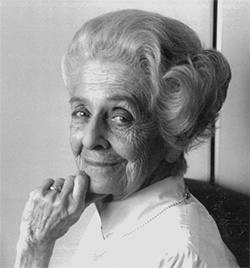 |
Rita Levi-Montalcini 1909-2012 Famous For: Discovery of nerve growth factor |
| Rita Levi-Montalcini, born 1909, Turin, Italy, was a Nobel Laureate honoured for her work in neurobiology. In her younger years, Rita considered becoming a writer, but chose to attend the University of Turin Medical School after seeing a close family friend die of stomach cancer. In 1936 she graduated with a degree in medicine and surgery and then went on to work at the university, during which time she learned a technique for silver staining nerve cells that made the cells clearly visible under a microscope. It was at this university the neurohistologist Giuseppe Levi sparked her interest in the developing nervous system. After arriving in America in 1947 and experimenting in a lab, Rita began working with Stanley Cohen. Together, they isolated nerve growth factor, a protein that promotes nerve growth in nearby developing cells. Both Rita Levi-Montalcini and Stanley Cohen were awarded the 1986 Nobel Prize for their discovery of a protein that stimulates nerve cell growth. |
|
| “Above all, don’t fear difficult moments. The best comes from them” |
|
9. Elizabeth Blackwell
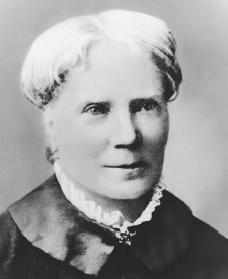 |
Elizabeth Blackwell 1821 – 1910 Famous For: First female doctor in the US |
|
Elizabeth Blackwell was a British born Physician who became the very first woman doctor in the US. Elizabeth graduated from New York’s Geneva Medical College in January 1849, she was the first woman to receive a medical degree. Elizabeth also helped to pioneer the importance of education of women in medicine in the US and co-founded the New York Infirmary for Women and Children. Apparently Blackwill started out by working as a teacher and was not interested in medicine, she was in fact disgusted at the idea; she “hated everything connected with the body, and could not bear the sight of a medical book,” she said. “My favourite studies were history and metaphysics, and the very thought of dwelling on the physical structure of the body and various aliments filled me with disgust”. Despite this, Elizabeth decided to study medicine after a dying friend told her how she would have avoided her worst suffering if her physician had been a woman as there were only male doctors at the time. |
|
| “If society will not admit of woman's free development, then society must be remodelled” |
|
10. Rosalyn Sussman Yalow
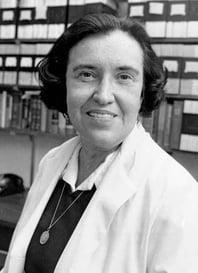 |
Rosalyn Sussman Yalow
1921 – 2011 Famous For: Development of theRadioimmunoassay (RIA) |
|
Rosalyn Yalow was a medical physicist and a Nobel Prize winner in Physiology or Medicine after developing radioimmunoassay (RIA) along with Solomon Berson, which is a technique used to measure the concentration of antigens such as hormones in the body. Originally, the technique was used to study insulin levels in diabetes, but the technique has been applied to hundreds of other substances such as vitamins and enzymes that were all too small to detect before her discovery. The technique made it possible to scan blood donations for infectious diseases, like HIV/AIDS or hepatitis. If you have ever needed a blood transfusion then it is this woman who you should be grateful for. The discovery had a huge commercial potential, but Yalow and Berson decided against patenting the method for their own personal wealth. |
|
| "The excitement of learning separates youth from old age. As long as you’re learning you’re not old.” | |
11. Dorothy Hodgkin
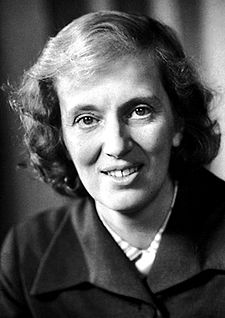 |
Dorothy Hodgkin 1910 – 1994 Famous For: Protein Crystallography |
|
Dorothy Hodgkin, born 1910 in Cairo Egypt, to a British expatriate, was known for her advancement of X-ray crystallography techniques. These techniques are now used to calculate the three dimensional structures of biomolecules. Dorothy won the Nobel Prize in Chemistry for her findings on the makeup of Vitamin B12 in 1964, during the time the Nobel Prize committee also recognised her work towards the structure of penicillin. She received her bachelor’s degree from Oxford University in 1932 and assisted a famous crystallographer John Desmond Bernal at Cambridge University. Hodgkin and Bernal worked towards determining the structure of pepsin, a protein crystal, and after this Dorothy returned to Oxford to complete her doctorate as well as teach in 1934. At Oxford, Dorothy was a victim of sexism as she was not allowed to attend research meetings because she was a woman, she would climb an old rickety spiral stair case everyday to access a window that allowed her enough light to use her microscope properly as she was given some of the worst working environments over her male peers. |
|
| “I was captured for life for chemistry and crystals” |
|
We hope you've enjoyed this article! Please leave a comment below if you would like to mention any other influential women in science, medicine and mathematics who are important to you and why.
References:
- https://en.wikipedia.org/wiki/Rebecca_Lee_Crumpler
- http://famousfemalescientists.com/gertrude-elion/
- https://en.wikipedia.org/wiki/Rosalyn_Sussman_Yalow
- https://www.mariecurie.org.uk/who/our-history/marie-curie-the-scientist
- https://en.wikipedia.org/wiki/Marie_Curie
- http://www.nobelprize.org/nobel_prizes/chemistry/laureates/1911/marie-curie-faq.html
- https://en.wikipedia.org/wiki/Rita_Levi-Montalcini
- http://www.biography.com/people/rita-levi-montalcini-9380593
- http://famousfemalescientists.com/rosalind-franklin/
- https://en.wikipedia.org/wiki/Rosalind_Franklin
- http://famousfemalescientists.com/dorothy-hodgkin/
- https://en.wikipedia.org/wiki/Dorothy_Hodgkin
- https://en.wikipedia.org/wiki/Florence_Nightingale
- https://en.wikipedia.org/wiki/Ada_Lovelace
- https://en.wikipedia.org/wiki/Metrodora
- http://www.medicaldaily.com/most-influential-women-medicine-past-present-270560
- http://www.statisticsviews.com/details/news/4459361/International-Womens-Day-celebrates-women-statisticians.html


